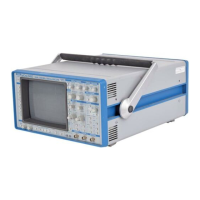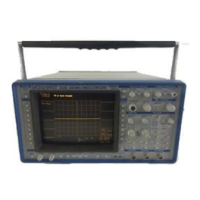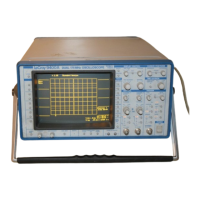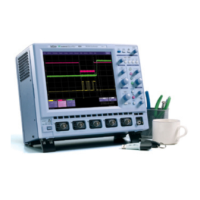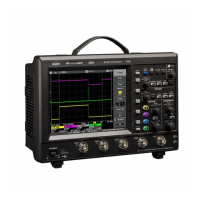C–4
Appendix C
representation of choice for signals containing isolated peaks —
periodic signals, for instance.
The power density spectrum (V
2
/Hz) is the power spectrum
divided by the equivalent noise bandwidth of the filter in Hz
associated with the FFT calculation. This is best employed for
characterizing broad-band signals such as noise.
Memory for FFT The amount of acquisition memory available will determine the
maximum range (Nyquist frequency) over which signal
components can be observed. Consider the problem of
determining the length of the observation window and the size of
the acquisition buffer if a Nyquist rate of 500 MHz and a
resolution of 10 kHz are required. To obtain a resolution of 10
kHz, the acquisition time must be at least:
T = 1/∆f = 1/10 kHz = 100 µs.
For a digital oscilloscope with a memory of 100 k, the highest
frequency that can be analyzed is:
∆f × N/2 = 10 kHz × 100 k/2 = 500 MHz.
FFT Pitfalls to Avoid Take care to ensure that signals are correctly acquired: improper
waveform positioning within the observation window produces a
distorted spectrum. The most common distortions can be traced
to insufficient sampling, edge discontinuities, windowing or the
“picket fence” effect.
Because the FFT acts like a bank of bandpass filters centered at
multiples of the frequency resolution, components that are not
exact multiples of that frequency will fall within two consecutive
filters. This results in an attenuation of the true amplitude of
these components.
Picket Fence and Scallop The highest point in the spectrum can be 3.92 dB lower when
the source frequency is halfway between two discrete
frequencies. This variation in spectrum magnitude is the picket
fence effect. And the corresponding attenuation loss is referred
to as scallop loss. LeCroy scopes automatically correct for the
scallop effect, ensuring that the magnitude of the spectra lines
correspond to their true values in the time domain.
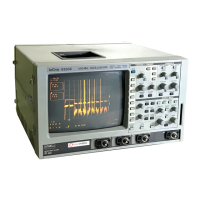
